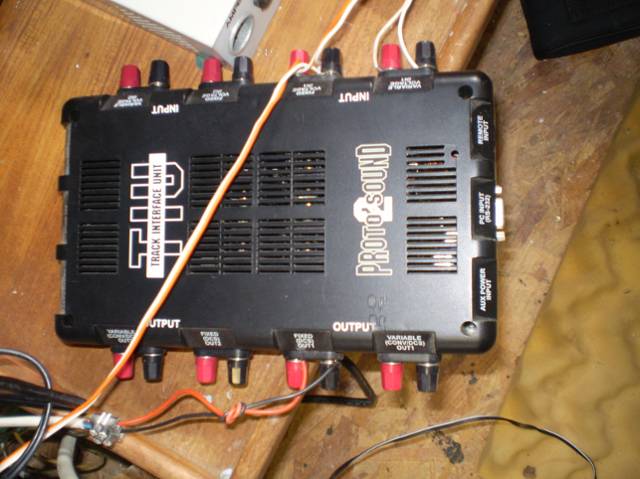James,
From The DCS O Gauge Companion 2nd Edition:
If the DCS Remote still cannot find the TIU, the problem may be due to a floating transceiver board in the TIU or the DCS Remote.
The process of determining if the transceiver board in the TIU or the DCS Remote has floated out of its socket is as follows:
• First, connect (tether) the DCS Remote's Programming (TIU Connection) port to the TIU's Remote Input port using a 4-conductor telephone handset cable
• Press the Read key on the DCS Remote
• If the message TIU ERROR appears in the DCS Remote's screen, it may be because one of the pins inside either the DCS Remote's Programming (TIU Connection) port or the TIU's Remote Input port is bent or shorted to another pin. Inspect these ports and straighten any bent pins before continuing. If the message TIU ERROR persists, the TIU or the DCS Remote may be damaged
• If the TIU is found, the problem most likely is that the transceiver board in the TIU or the DCS Remote has floated out of its socket.
Since reseating a floating transceiver board in the TIU is considerably easier than reseating the transceiver board in the DCS Remote, it's suggested to check the TIU first by proceeding as follows:
• Remove all connections to the TIU
• Turn the TIU over and remove the 6 Philips head screws that hold it together
• Turn the TIU right side up and remove the top half of the case
• Facing the channel input ports, the transceiver board is on the lower right side of the case. It will have a short black wire connected to it. This wire is the antenna
• Press down gently on the transceiver board to reseat it. Also ensure that the black wire antenna is lying flat. Do not under any circumstances lift up on the transceiver board or antenna!
• Place a piece of soft, nonconductive spongy material above the transceiver board so that it will hold the board in place when the top of the case is replaced
• Replace the cover, turn the TIU over and replace the screws
• Turn the TIU right side-up and reconnect all wires to the TIU.
Check if the problem is resolved. If not, proceed to reseat the transceiver board in the DCS Remote as follows: Opening the DCS Remote can be extremely difficult and can cause problems with the DCS Remote! You should consider having this done by an authorized MTH service center!
• Open the battery compartment door on the back of the DCS Remote and remove the batteries
• Remove the Philips head screw inside the battery compartment
• Before opening the DCS Remote's case, note that when the DCS Remote is opened, there will still be a black wire connecting the two halves of its case
• Begin to separate the two halves of the DCS Remote's case by pushing outwards from inside the battery compartment while squeezing the bottom portion of the top of the DCS Remote. This requires considerable patience, particularly when opening a DCS remote's case for the first time
• Once the bottom of the shell begins to separate, gently continue to separate the two halves of the case and open the DCS Remote like a book, taking care not to damage the wire connecting the two halves of the case
• The transceiver board is located at the top of the DCS Remote behind the LCD screen.
Do not under any circumstances lift up on the transceiver board or black wire!
• Press down gently on the transceiver board to reseat it
• Place a piece of soft, nonconductive spongy material on top of the transceiver board so that it will hold the board in place when the DCS Remote is reassembled
• Carefully line up the two halves of the case and gently but firmly snap them back together
• Replace the Philips head screw, the batteries and the battery compartment door.
Check if the problem is resolved. If the problem persists, the TIU or the DCS Remote may be damaged. To determine which device is damaged, it is necessary to substitute a known, good device for the TIU and the DCS Remote, one at a time, and note if the new device can communicate with the original device. Once a device is known to be defective, it should be returned to MTH, an authorized MTH service center, or where it was purchased, so that it may be repaired.
This and a whole lot more is all in "The DCS O Gauge Companion 2nd Edition", now available for purchase as an eBook or a printed book from MTH's web store site! Click on the link below to go to MTH's web page for the book!


 Thanks for your replys.
Thanks for your replys.